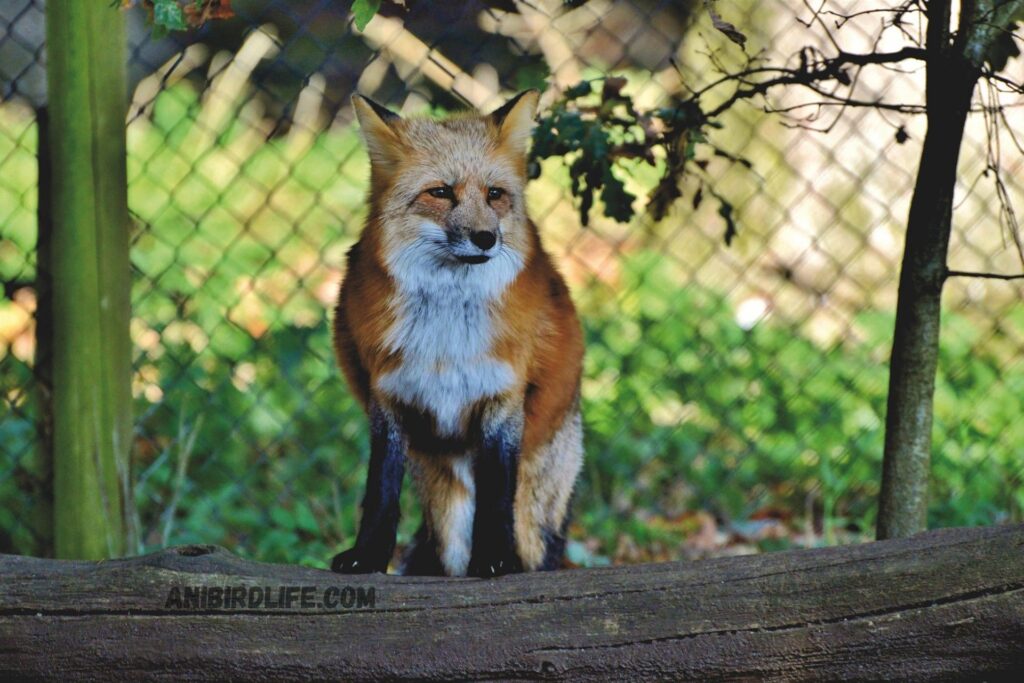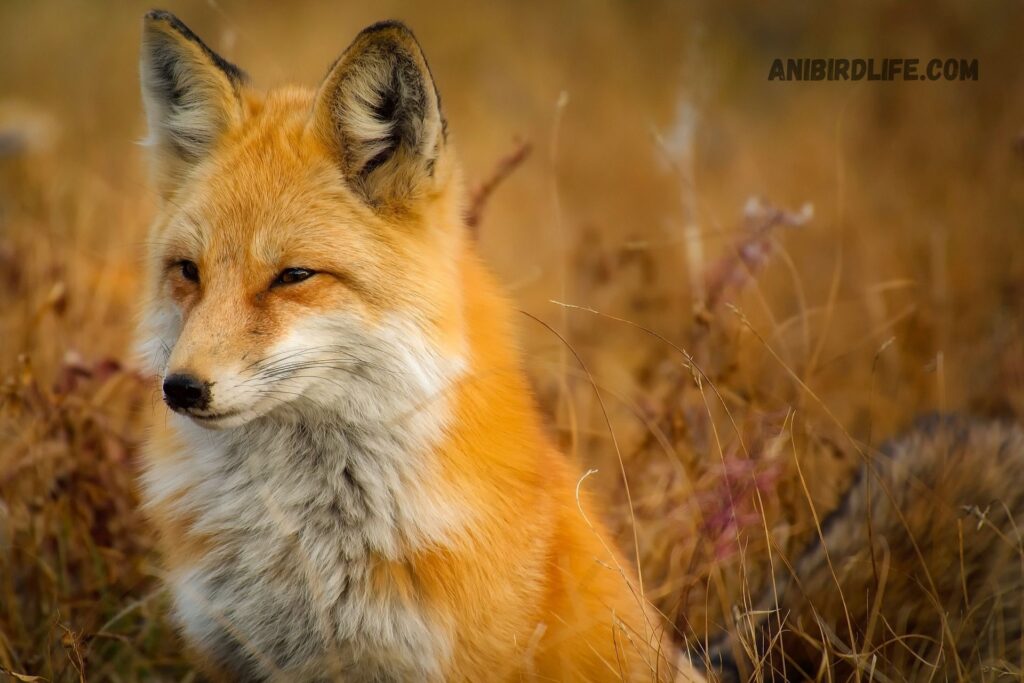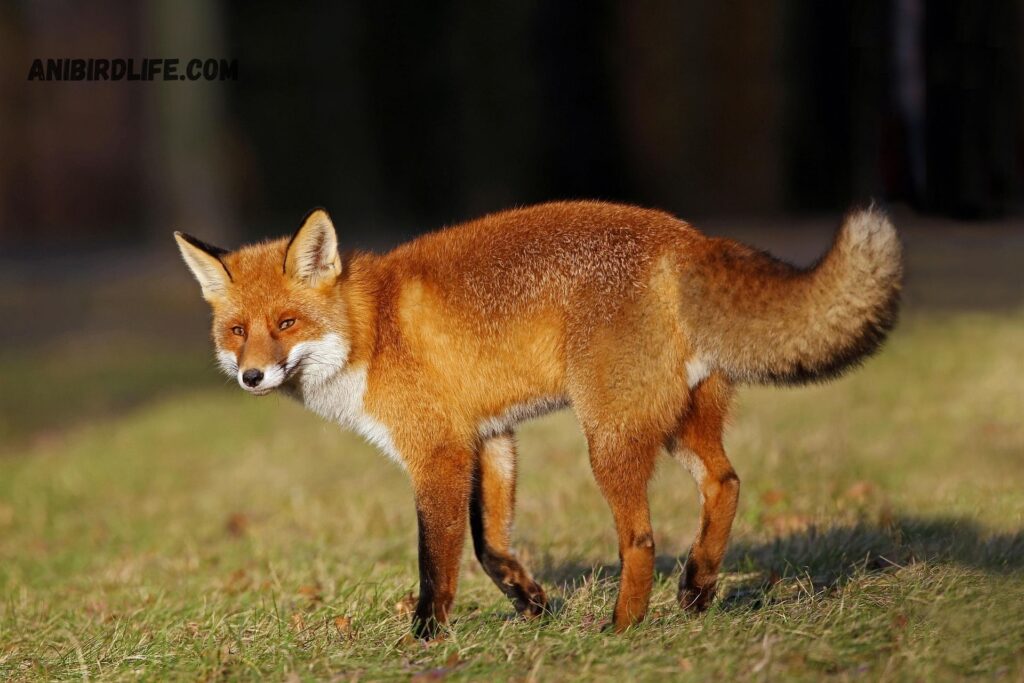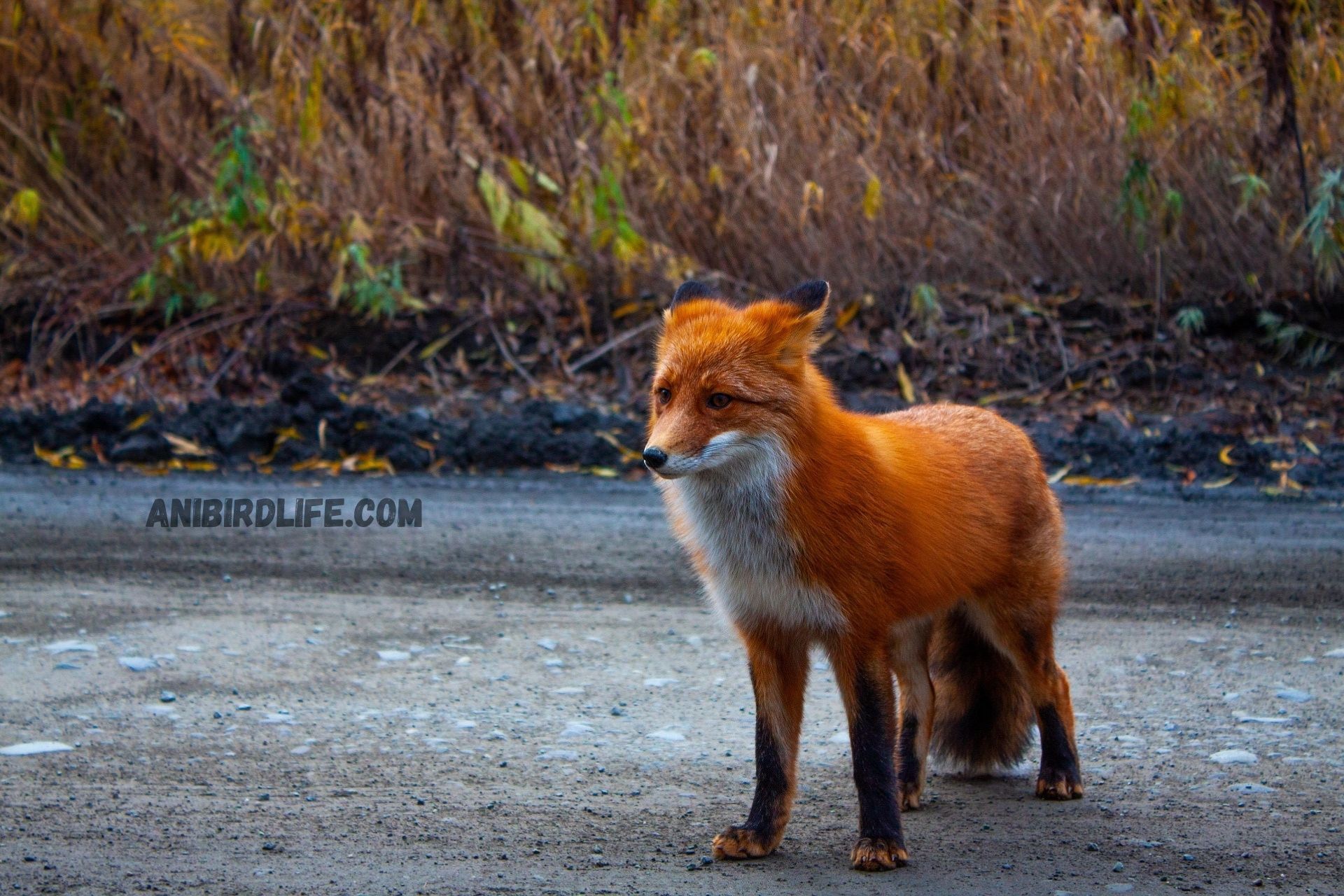Among the animal kingdom’s most recognizable and versatile species is the red fox (Vulpes vulpes). The red fox, distinguished by its bright red coat, bushy tail, and sly disposition, has come to represent intelligence and tenacity. Known as the “Guardian of the Woodlands,” this amazing creature is essential to preserving the equilibrium of ecosystems all across the world.
In addition to providing answers to some commonly asked concerns about this amazing animal, this article will examine its life, behavior, and ecological significance.
An Overview of the Red Fox
The largest of the real foxes, the red fox can be found in a variety of environments, such as mountains, meadows, woods, and even cities. Because of its versatility, it has been able to flourish in a variety of settings, including the busy metropolis of Europe and North America as well as the frigid tundras of the Arctic.
Physical attributes
• Coat: Although its coat can be silver, black, or cross-bred, the fox gets its name from its reddish-orange fur.
• Tail: In cold weather, its bushy tail, sometimes known as “brush,” which is frequently tipped with white, provides warmth.
• Size: Red foxes are comparatively small, with a body length of 18 to 35 inches (45 to 90 cm) and a tail length of 12 to 22 inches (30 to 55 cm). They weigh between 6.5 and 24 pounds (3 to 11 kg).
• Senses: They are proficient hunters due to their good hearing, strong vision, and acute sense of smell.
Distribution and Habitat
The Northern Hemisphere, which includes North America, Europe, Asia, and portions of North Africa, is home to foxes. Because of their extreme adaptability, they may survive in a wide range of habitats, including broad farmlands, deep forests, and even residential areas.

The Red Fox’s Function in the Ecosystem
This is an important keystone species that keeps its environment healthy and in balance. Here’s how:
1. Control of Populations
As opportunistic hunters, red foxes consume small mammals such as birds, rats, and rabbits. They aid in preventing overgrazing and preserving the equilibrium of plant life in their ecosystems by managing the numbers of these animals.
2. The Spread of Seeds
Fruits and berries, which foxes frequently eat, make their way through their digestive tracts and end up in new places through their droppings. This technique encourages plant diversity and facilitates seed distribution.
3. The act of scavenging
These foxes are scavengers that contribute to environmental cleanliness by eating organic debris and carrion. In addition to recycling nutrients back into the ecosystem, this slows the spread of disease.
4. Feed Bigger Predators
Although they are excellent hunters, red foxes are also prey for eagles, wolves, and coyotes. They are therefore a crucial component of the food chain.
Social Structure and Behavior
These foxes are renowned for their versatility and intelligence.
The following are some intriguing facets of their behavior:
1. Social but solitary
Despite their tendency to live alone, red foxes develop close family ties during the mating season. A mated pair and their young make up a normal fox family.
2. Interaction
Foxes interact with one another by a range of vocalizations, such as howls, screams, and barks. To indicate their territories, they also use scent marking and body language.
3. Hunting Methods
As nocturnal hunters, red foxes use their acute senses to find their prey. They are renowned for adopting a distinctive hunting strategy known as “mousing,” in which they jump into the air and attack their target.
4. Flexibility
Because of their extreme adaptability, foxes may live well in cities. They are frequently observed hunting small animals in metropolitan parks or scrounging for food in trash cans.

Dangers to the Red Fox
These foxes are threatened by a number of factors despite their versatility, such as:
1. Loss of Habitat
Because their habitats have been destroyed by urbanization and deforestation, foxes must either adapt to new areas or face population decrease.
2. Hunting and Trapping
These foxes are killed for their fur or as a component of pest management initiatives in some areas. As a result, their numbers have decreased in several places.
3. Disease
Red foxes are prone to illnesses that can swiftly spread throughout populations, such as mange and rabies.
4. The Changes in Climate
Red fox survival may be threatened in the long run by changes in climatic patterns that impact their access to food and shelter.
Conservation Activities
The existence of red foxes depends on efforts to preserve them and their habitats. Among the conservation strategies are:
• Habitat Preservation: preserving meadows and woods to give foxes a secure home.
• Disease Management: Vaccination campaigns are put in place to stop the spread of illnesses like rabies.
• Public Awareness: Spreading knowledge about the value of them in the environment and encouraging harmony between people.
Cultural Significance
Across many civilizations, the red fox has long been a symbol in literature, mythology, and folklore. It is a major character in many tales and customs because of its shrewdness and intelligence.
1. Mythology and Folklore
• European Folklore: The red fox is frequently depicted in European folklore as a cunning animal that outwits both people and other animals. The fox is portrayed as a cunning and resourceful figure in tales such as Aesop’s fables.
• Japanese Mythology: The fox, also known as the kitsune, is a supernatural being in Japanese culture. Kitsune are frequently portrayed as protectors of the spirit world and shape-shifters.
• Native American Traditions: The fox is seen by many Native American cultures as a representation of survival and adaptability. It is frequently linked to shrewdness and guile.
2. Contemporary Media
The fox still serves as an inspiration for contemporary media, showing up in video games, films, and books. The fox’s cunning and endearing qualities are demonstrated by characters such as Nick Wilde in Zootopia and Maid Marian, Robin Hood’s companion in Disney’s Robin Hood.

A Closer Look at the Red Fox’s Adaptability
The fox’s capacity for environmental adaptation is among its most intriguing features. Let’s examine in more detail how this species flourishes in various environments.
1. City Foxes
Red foxes are accustomed to living with people in urban and suburban settings. Parks, gardens, and even backyards are common places to observe them. Urban foxes are quite effective in these settings because they have modified their diet to include human food waste.
• Difficulties: Urban foxes are susceptible to poisoning, collisions with household pets, and road accidents.
• Advantages: They lessen the transmission of diseases brought by rats and mice by assisting in the management of rodent populations in urban areas.
2. Adaptations to the Arctic
These foxes have evolved smaller ears and thicker fur to stay warm in the Arctic. They demonstrate their capacity to endure harsh environments by vying for food and territory with Arctic foxes.
3. People Who Live in Deserts
These foxes have evolved to live with little water in desert areas. In order to avoid the heat, they are active during the cooler hours of the day and get moisture from their victim.
Family Life
The social organization of red foxes is intricate, especially during the mating season. A closer look into their family dynamics is provided below:
1. Pair bonding and mating
During the breeding season, red foxes establish strong pair connections and are monogamous. The female vixen rear their young with the assistance of the male dog fox.
2. Bringing Kits Up
• Birth: Infants are born helpless and blind, and they are totally dependent on their mother for warmth and sustenance.
• Development: After two weeks or so, they open their eyes and start looking around the den. They begin learning how to hunt by the time they are three months old.
• Independence: In order to create their own territory, kits usually depart from their parents in the fall.
3. Behavior of Denning
The intricate dens that red foxes are known for are frequently dug by them or occupied by other animals. They may raise their young safely and comfortably in dens.
Hunting Methods
As expert hunters, red foxes use a range of tactics to capture their prey. These are a few of their more noteworthy tactics:
1. Mousing
This is the distinctive hunting method used by red foxes. They seek small creatures, such as mice and voles, under the grass or snow by using their keen sense of hearing. They precisely pounce and jump high into the air after locating their victim.
2. The act of stalking
Red foxes are patient stalkers who frequently approach their prey in silence before running quickly to capture it.
3. The act of scavenging
Red foxes are opportunistic scavengers in addition to hunters. When food is available, they will consume insects, carrion, and even human food scraps.
The Relationship Between Humans and the Red Fox
Foxes and humans have a complicated relationship. They are sometimes viewed as pests while being appreciated for their intelligence and beauty.
1. Good Relations
• Wildlife Watching: Whether in fields, forests, or even cities, many people like to see red foxes in the wild.
• Cultural Symbolism: The red fox is a popular character in many cultures due to its representation in media and folklore.
2. Adverse Relationships
• Livestock Predation: Red foxes may prey on poultry in rural regions, which could cause disputes with farmers.
• Disease Transmission: Humans and domestic animals are at risk from foxes’ ability to transmit diseases like rabies.
3. Strategies for Coexistence
Experts advise securing trash and cattle to keep foxes away in order to reduce disputes.
• Refraining from feeding foxes since this can cause reliance and hostile conduct.
• Aiding conservation initiatives to save fox habitats.
The Red Fox’s Future
Our capacity to strike a balance between wildlife conservation and human development will determine the red fox’s future. Here are some important things to think about:
1. Changes in Climate
Red foxes may encounter new difficulties as temperatures rise and their habitats change. For example, Arctic foxes are already experiencing increasing competition from red foxes heading northward.
2. Urban Expansion
Red foxes will have to adjust to their dwindling natural habitats as cities expand. Fox populations can be supported by urban planning that incorporates wildlife corridors and green areas.
3. Preservation Activities
A mix of disease control, habitat protection, and public education is needed to protect red foxes. We can guarantee the survival of this iconic species by cooperating.
FAQs
1. What is their winter survival strategy of them?
Because of their thick coats, red foxes stay warm during the winter months. In order to guarantee a consistent supply throughout the winter, they also store food in the fall.
2. Are they able to swim?
They can swim, but they usually stay out of the water until absolutely required.
3. What distinguishes an Arctic fox from a red fox?
Arctic foxes are smaller and have white or blue-gray fur that is suited to cold climes, whereas red foxes are larger and have a reddish coat.
4. Are red foxes hibernating animals?
Red foxes don’t hibernate, sorry. They stay active all year long, changing their behavior according to the seasons.
5. How do red foxes identify their range?
Urine and gland secretions are examples of scent marking that red foxes utilize to mark and protect their territories.
6. Are red foxes gregarious or lonely creatures?
Normally solitary, red foxes gather in family groupings during the breeding season.
7. What noises are produced by red foxes?
Red foxes can make a range of noises, including as howls, screams, and barks. They communicate and defend their territory via their vocalizations.
8. What are the advantages of red foxes for farmers?
Red foxes aid in rodent population reduction, which can lessen crop loss and the transmission of pest-borne diseases.
9. What is the main danger they face?
One of the main challenges to red fox populations is habitat loss brought on by urbanization and forestry.
10. Is it possible to domesticate them?
They can be somewhat tamed, although they are not fully domesticated and still have their untamed nature.
Conclusion
The flexibility and tenacity of nature are demonstrated by the red fox. As the “Guardian of the Woodlands,” it is essential to preserving ecological equilibrium in a variety of ways, including seed distribution and rodent population management.
We can take action to guarantee this amazing creature’s existence and the preservation of the environments it calls home if we comprehend and value it. The red fox’s intelligence, beauty, and ingenuity never cease to enthrall and inspire us, whether it is in the wild or in an urban setting.
Together, we can safeguard them and the ecosystem it symbolizes. Ultimately, the survival of species such as the red fox reflects the overall health of our world. 🦊
